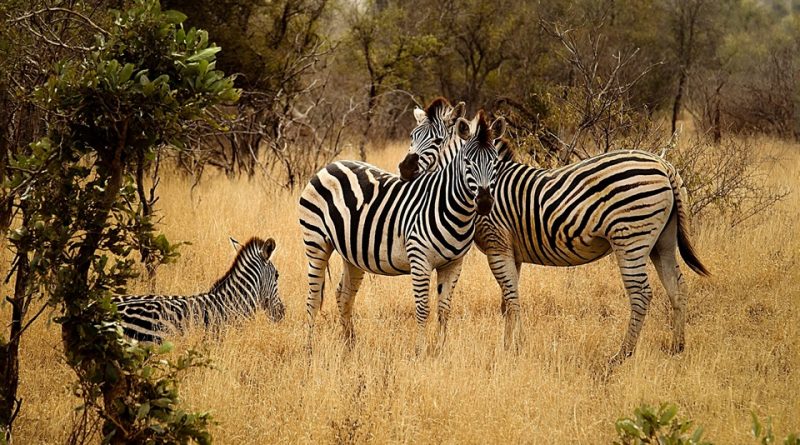Ecological role of herbivores
Ecological role of herbivores
Herbivores are organisms that feed mainly on living plant organic matter, i.e. producers. Herbivory, in ecology, is the typical form of nutrition of primary consumers in the network of food pyramids. Other consumers in the network may feed on meat (of primary or subsequent consumers, and decomposers), while decomposers feed on feces, dead organisms, etc.
In addition to leaves, herbivory includes the ingestion of any part of the autotrophic producers (roots, fruit, nectar, processed sap), or the entire producers themselves (cyanobacteria, other uni- and multicellular algae, microflora organisms).
Herbivores play the functional role in the food chain of transforming plant molecules (cellulose, starch) into animal molecules (glycogen), which can then be assimilated by carnivores or decomposers. Their assimilation efficiency is very low due to their earlier position in the chain. The diet of herbivorous animals varies according to the seasons based mainly on the availability of food, given that different types of food of plant origin are available depending on the season. The herbivore cannot be considered a predator of plants, given that killing is often lacking due to interaction (plants can replace an amputated part, not without consequences for their organism), not to mention that generally the size of prey and predator, are very variable, and therefore it is not always the former that is on average larger than the latter.
Ecology –
Regarding the ecological role of herbivores, a study carried out in the Alps has shown that, although carnivorous animals are very important in the food chain and in the ecosystem, the role of herbivorous animals is vital.
The study was conducted by the Swiss Federal Institute for Research and demonstrates the importance of herbivorous animals through their selective disappearance in the ecosystem.
The work, published in the journal Nature Communications, is in fact based on the installation of fences that exclude animals.
These fences are based on the exclusion of various animal species from pastures to verify their importance.
Some allowed the passage of small mammals such as rabbits and others even prevented the passage of snails.
Researchers have found that when large mammals are absent, other plant species prevail. This could have enormous consequences for all species in the ecosystem.
The researchers also managed to exclude all animals. This absence led plants to further reduce their relationship with bacteria or other ecosystem components.
Furthermore, contrary to what one might think, the Earth’s large herbivores can play an important role in combating climate change. This is suggested by research published in the journal Current Biology. The study, taken up by the US NGO Mongabay, underlines how these animals end up implementing a series of mechanisms which prove, in their own way, to be effective mitigation strategies.
The specimens in question, in particular, help prevent fires, reduce the amount of solar heat absorbed by the earth’s surface and contribute significantly to the long-term storage of carbon in the soil.
Mammals such as elephants, wildebeests and the like could help, not hinder, carbon conservation efforts.
The interactions between large animals and the climate, the researchers point out, can sometimes be problematic. Not differently, one might add, from the complex relationship between fauna and soil. Emblematic, in this sense, is the case of the surprising balance established millions of years ago between the soil and the colossal herbivores of the time, namely the dinosaurs. A mysterious ecosystem mechanism that continues to challenge scientists’ understanding. Returning to the present day, the research photographs a somewhat surprising situation.
Despite being apparently destructive to vegetation, in fact, large herbivores appear to have “the greatest potential to facilitate climate change mitigation on a global scale through three mechanisms”.
That is, the scientists explain, “changes in the fire regime”, especially in humid prairies or warm temperate forests”. But also “changes in terrestrial albedo and increases in soil carbon stocks”, particularly in temperate, tropical and subtropical lowland ecosystems.
In short, the role of herbivores, together with all living beings in every ecosystem, is very complex and their decrease or disappearance, even in agricultural systems, can cause very dangerous ecological implosions.

